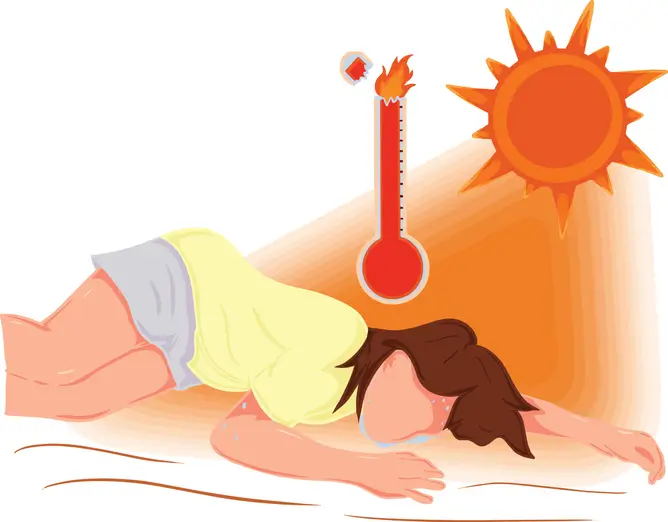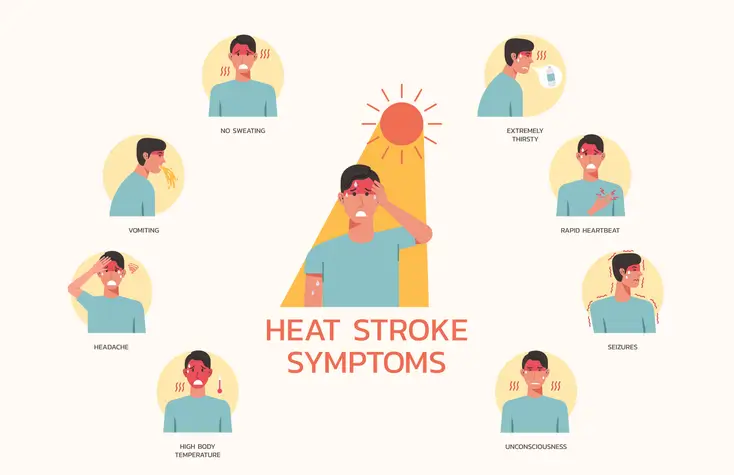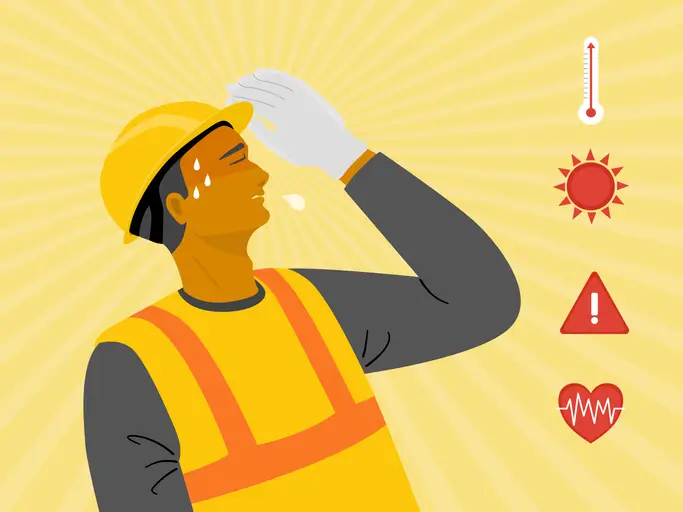Alarming Heat Stroke Statistics To Know in 2025
As the planet continues to warm at an alarming rate, the impacts of extreme heat are becoming increasingly deadly, particularly for vulnerable populations such as the elderly, children, and outdoor workers. Sweltering urban heat, combined with climate-driven temperature spikes, is transforming once-harmless summer days into serious health hazards.
Among the most dangerous outcomes is heat stroke, a medical emergency that occurs when the body’s core temperature rises above 104°F (40°C). If not treated quickly, it can lead to organ failure, permanent disability, or even death.
The risk is rising globally as more people are exposed to dangerous heat in their homes, workplaces, and communities. Understanding the scope of this crisis is essential as we navigate a warming world in 2025.
What Is Heat Stroke?

Heat stroke is a life-threatening medical emergency that occurs when the body’s internal temperature rises to 104°F (40°C) or higher. This condition often results from prolonged exposure to high temperatures, especially when combined with physical exertion, such as working or exercising outdoors in extreme heat.
Unlike milder heat-related illnesses like heat exhaustion or dehydration, heat stroke is far more serious and can cause lasting damage to vital organs, including the brain, heart, kidneys, and muscles.
It can develop quickly and without warning, especially in vulnerable populations such as the elderly, children, and outdoor workers. Common signs include confusion, disorientation, nausea, rapid heartbeat, flushed skin, lack of sweating despite the heat, and even unconsciousness.
If not treated immediately, heat stroke can result in permanent disability or death. It is the most severe form of heat illness and demands rapid cooling of the body and urgent medical attention to prevent fatal outcomes.
Common Symptoms of Heat Stroke Include:

- High body temperature (104°F / 40°C or higher)
- Hot, dry skin or profuse sweating that suddenly stops
- Altered mental state or behavior (confusion, agitation, slurred speech, irritability, delirium)
- Loss of consciousness or fainting
- Nausea and vomiting
- Flushed or red skin
- Rapid, shallow breathing
- Racing heart rate (strong and fast pulse)
- Throbbing headache
- Muscle weakness or cramps
- Dizziness or light-headedness
Vulnerable populations such as the elderly, children, outdoor workers, and people with chronic illnesses are especially at risk. Unfortunately, as global temperatures rise and heat waves become more frequent and intense, the incidence of heat stroke is increasing worldwide.
Alarming Heat Stroke and Heat-Related Illness Statistics (2025)

Here are some sobering statistics and facts from recent reports that underscore the growing heat-related public health crisis:
- A New Record High in Workplace Deaths (US): According to the U.S. Environmental Protection Agency (EPA), heat-related deaths among workers have increased by 70% over the past decade, with 2023 and 2024 ranking among the deadliest years for heat-related workplace fatalities on record.
- Rising Global Heat Exposure: The International Labour Organization (ILO) estimates that more than 2.4 billion workers worldwide are exposed to excessive heat annually. This figure represents nearly 70% of the global workforce.
- Outdoor Workers Face Highest Risk: Agricultural and construction workers bear the brunt of heat exposure. The ILO reports that outdoor workers in low- and middle-income countries are particularly vulnerable due to limited access to cooling systems, rest periods, and hydration.
- Heat-Related Deaths Could Rise Dramatically: If global warming exceeds 1.5°C, heat-related deaths could rise by over 300,000 annually, according to projections by the World Health Organization (WHO) and other global climate-health collaborations.
- Economic Impact on Productivity: The World Economic Forum reports that extreme heat is projected to cause $2.4 trillion in productivity losses by 2030, with the most significant impacts felt in sectors like agriculture, construction, and manufacturing.
- Shorter Safe Working Hours: As temperatures rise, safe working hours shrink. In South Asia and parts of Africa, workers are losing up to 30% of daytime working hours during the hottest months due to extreme heat.
- Young and Elderly at Higher Risk: Hospital admissions for heat stroke and heat exhaustion are disproportionately higher among people over 65 and children under 5. In the U.S., the CDC notes that emergency visits due to heat illness have increased by more than 20% in the last five years.
- Urban Heat Islands Intensify Risks: Urban areas often experience higher temperatures than rural ones due to heat-absorbing infrastructure like asphalt and concrete. This “urban heat island” effect has caused temperatures in cities to be up to 7°F (4°C) higher than surrounding areas, putting urban dwellers at elevated risk.
- Climate Change Is a Driving Force: Heat-related illnesses and deaths are widely recognized as among the most direct and measurable health effects of climate change. A UN report notes that climate-driven heat stress could push 100 million people into poverty by 2030 if urgent mitigation and adaptation strategies are not implemented.
Conclusion
The statistics are clear: heat stroke is not just a personal health issue but a growing public health and labor crisis. As climate change continues to raise global temperatures, more people—especially workers, the elderly, and children—are being placed in harm’s way. Governments, employers, and communities must act urgently to implement better safety standards, increase public awareness, and invest in climate resilience infrastructure.
Preventing heat stroke is possible with the right measures: hydration, shade, education, and proactive health monitoring. But without systemic change, these alarming statistics may only worsen. Now is the time to treat heat stroke as the life-threatening emergency it is—and ensure that no one loses their life simply because the world around them is getting hotter.
Related Posts

October 2025: National Protect Your Hearing Month

EHSPractice.com: Affordable OSHA 10 & 30-Hour Safety Training Online


